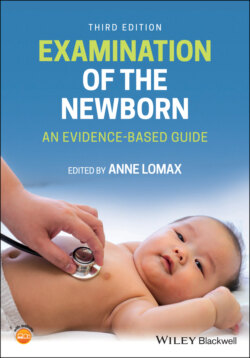Читать книгу Examination of the Newborn - Группа авторов - Страница 47
Limitations to history taking
ОглавлениеThis chapter has addressed the elements of the history‐taking assessment to inform the newborn examination. However, there are obstacles that may present and complicate the process (Table 1.8). The two most common problems are time and the environment. These two elements alone can have a significant impact upon the quality and outcome of the history‐taking exercise. The workload pressures endured by many newborn examiners impact upon the time available to perform the examination.
There are other barriers that can compromise the quality of history taking. The questioning technique, manner and general communication skills of the examiner can compromise the level of information imparted by the mother or both parents, who may interpret the line of questioning as invasive, particularly at a sensitive time after childbirth. Conversely, they may have something to hide and fear probing questions. The language barrier has become an increasing problem for many minority groups. All maternity units have access to interpretation services and the Screening Tests for You and Your Baby booklets are now available in a variety of languages. Mothers with hearing disabilities must also be accommodated with a sign language representative.
The evidence base to support the varied facets of the newborn examination may be developing, but NIPE practitioners must continue to acknowledge the importance of an evidence base to underpin and validate practice. Therefore, practitioners must engage with current empirical evidence and embrace the research process. As the body of midwives and neonatal nurses who are trained to conduct the newborn examination is relatively small in comparison to our medical colleagues, it is important that we contribute to the evidence to take practice initiatives forward.
TABLE 1.8 Limitations to effective history taking.
| Time constraints in relation to excessive workload |
| Inappropriate questions |
| Questioning technique, e.g. manner |
| Misrepresentation of facts given about family history |
| Environment in which history is being obtained, e.g. noise |
| Confidentiality |
| Lack of privacy |
| Suppression of disclosure due to partner presence |
| Equality and diversity issues, e.g. language barriers, understanding, |
| cultural diversity, disability, maternal deafness |
| Misinterpretation of information given |
